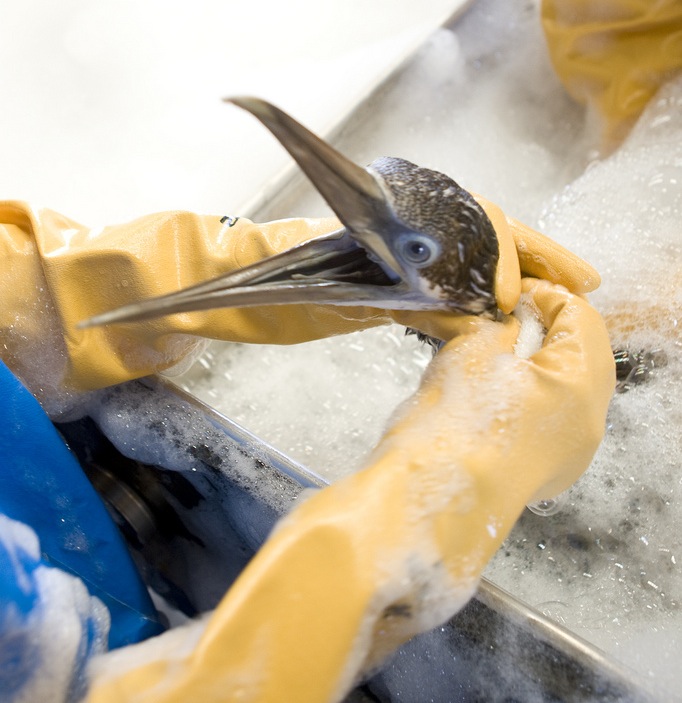Science News
Science in 2010
December 30, 2010

2010 was a year for exciting science news—think exoplanets, synthetic-life, arsenic-eating bacteria (or not!), earthquakes, volcanoes and of course, the Gulf oil spill. Many science news sites have their 2010 best lists posted—here are some of the highlights…
Earth
The Gulf oil spill—the number of gallons spilled and the controversy surrounding the damage seems to top many lists this year. Nature even named Jane Lubchenco, head of NOAA, its newsmaker of the year for how she handled the crisis.
Natural disasters often took the front page in 2010 with the Haitian earthquake and the eruption of Eyjafjallajökull topping many lists. The hard-to-pronounce Icelandic volcano also made many of the best science images of the year lists.
DiscoveryNews ends the year on a positive note with “How Humans Helped the Earth in 2010,” a slide show with text concerning recent strides in alternative energy, species and habitat conservation efforts and individual efforts to go green (electric cars, white roofs and saving energy).
For more environmental news of the year, New Scientist’s Short Sharp Science has a great review and the Nature Conservancy has a best/worst list on its site.
Life
Teeny, modified life stole the spotlight this year—the J. Craig Venter Institute’s so-called “synthetic cell” and GFAJ-1—the bacteria that incorporates arsenic into its DNA—or so NASA scientists claimed. Science writer Carl Zimmer discredited the arsenic bacteria paper on Slate; NASA author Felisa Wolfe-Simon defended herself in Science. Fun stuff!
The spread of pesky bedbugs was number six in Discover’s “Top 100 Science Stories of 2010.”
Nature’s great article this past summer on eradicating mosquitoes was among its readers’ top choices of the year.
Looking for something a little bigger and less controversial? New Scientist has “The coolest animals of 2010,” which includes a scorpion-eating bat and a fly thought to be extinct for over 160 years!
NPR found it was a very good year for Neanderthals—their genome was sequenced, brain examined and diet expanded.
Remarkably, the Census of Marine Life tops the BP oil spill in the Deep Type Flow blog’s biggest marine science stories of the year for its sheer numbers:
…over 500 research expeditions covering every ocean, over 2,500 scientists and the discovery of over 6,000 species new to science and published in over 2600 peer-reviewed papers.
Space
ScienceNow’s most popular story of all time, not just 2010, was “Does Our Universe Live Inside a Wormhole?” A wonderful theory that we also covered last spring.
Exoplanets, in part thanks to the Kepler mission, were all over the news this year—whether it had to do with size, atmosphere or number within a star system. Discover’s interview with local exoplanet hunter (and California Academy of Sciences Fellow) Geoff Marcy made number 11(!) on their 100 top stories list.
A little closer to home, Jupiter’s missing stripe and Neptune’s tale of cannibalism are included in New Scientist’s most popular space stories of 2010.
Our Moon and Saturn’s moons made news throughout the year and the top lists on Universe Today and Wired this week.
Universe Today also included SDO’s new views of the sun in their top stories list. Stunning!
Hubble celebrated its 20th year in space this year by taking even more beautiful images. Several are included in Bad Astronomy’s “Top 14 Astronomy Pictures of 2010.”
Technology
Electric cars and NASA’s new foray into commercial spacecraft are included in Scientific American’s top ten stories of the year.
The Large Hadron Collider was very busy this year, and topped many lists. Another machine at CERN made news (and also topped Nature’s readers’ choice list) when it was able to capture antimatter for a sixth of a second!
Graphene not only garnered a Nobel Prize this year, the material (and it’s potential) also made news and top science lists of the year.
DiscoveryNews put plastics on their 2010 list—whether its finding new ways of removing plastic from the oceans or engineering smarter plastics.
What was your favorite science story of the year? Share with us by adding it to the comment section below!
Image by Les Stone, International Bird Rescue Research Center/Wikipedia